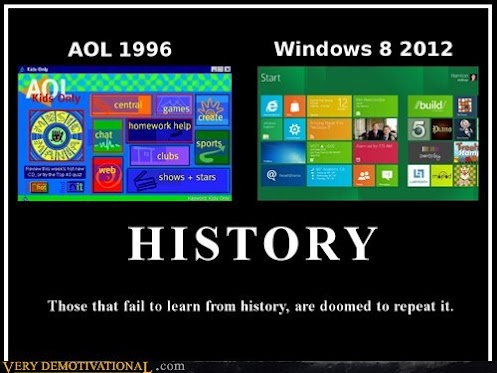Nachdem die letzte Ratssitzung in Kasra ja durch mindestens vier verschiedene Blogs von dort ansässigen Spielern schwappte, dachte ich mir sei es mal ganz interessant, die Artikel zu vergleichen und den harten Kern der Sache, den keiner wirklich in Frage stellt, herauszuarbeiten. Als Quellen dazu dient mir das Blog vom Feuerkrug, Schmied Georg, Kajira Dina, Kajira Kyra, Rarius Brom und der Diplomatin Isabell. Verwendet habe ich aus diesen Quellen alle Posts in Bezug auf die Ratssitzung plus Kommentare, bei den Kommentaren auch diejenigen aus meinem Blog.
Was sind also die harten Fakten, was bei der letzten Ratssitzung in Kasra stattfand?
Die Sitzung fand wie gewöhnlich unter Leitung des amtierenden Regenten, das war damals Nasty, statt. Die Regentin wurde in einem längeren Plot offenkundig von vier Assassinen bedroht, wobei diese Bedrohung vor der Sitzung ihr Ende fand. Dies war ein Bestandteil der Sitzung und Teibar von den Rarii schlug vor den Helden namens Luekan, der diese Attentäter eigenhändig tötete, mit einem Orden auszuzeichnen. Dabei ist dieser Orden allerdings erst noch zu schaffen und solange muss das eben warten, denn was es noch nicht gibt kann logischerweise auch noch nicht verliehen werden. (Nachzulesen bei Dina und mir in den Kommentaren).
Rarius Brom warf ein, das sei im Prinzip nichts als Pflichterfüllung von Luekan gewesen und es kam zu einem Disput (steht bei Brom), ob Brom neidisch sei oder eben nicht. Auch gab es noch irgendeinen ominösen Antrag, den alle unterschrieben hätten, von Nasty angesprochen worden ist, aber nur Georg stand dann dazu (steht auch bei Brom).
Eine ehemalige Kajira namens Honey, die inzwischen zur freien Frau geworden war, nahm an der Sitzung teil und erntete hauptsächlich Spott vom Rest der Anwesenden. (Nachzulesen bei Dina und Isabell).
Weiterhin sollte jemand, der bisher auf der Sim nicht tätig war, am Rat vorbei mit einer passenden RP-Geschichte im Schnellverfahren eingebürgert werden – und das machte der Rat nicht mit (nachzulesen bei Georg, Dina und Kyra), auch wurde der neue Verwalter des Gutes namens Giacomo vorgestellt, der den Antrag auf Bürgerschaft stellte (zu lesen bei Brom).
Soweit die harten Fakten, mehr ist da nicht gewesen. Aber es reichte aus, einige Folgen einzuleiten und fand in den kasratischen Blogs ein starkes Echo.
Die Folgen in halbwegs chronologischer Reihenfolge
Los ging es damit, dass am Tag nach der Ratssitzung sich Isabell in einem etwas schärferen Ton Luft verschaffte. Ihr missfiel, dass auf Honey rumgehackt wurde, Seitenhiebe gegen den neuen Gutsverwalter Giacomo von Seiten Pinion fielen und regte sich am meisten aber darüber auf, dass Luekan für den Orden vorgeschlagen worden ist und nicht der Krieger namens Brom, dem sie offenkundig nahesteht. Ob diese Einwände von Isabell im Rat direkt vorgebracht worden sind, ist mir nicht bekannt – sie schweigt sich darüber aus. Allerdings wäre dies eindeutig der bessere Ort dafür gewesen, belegt ist allerdings, dass sie nicht die ganze Sitzung mit verfolgte und es wird ja nun wirklich nichts so heiß gegessen wie es gekocht wird.
Kurz und gut: Isabells Post ließt sich für mich wie ein wütendes Dampfablassen, bei dem nicht weiter nachgedacht sondern direkt einfach geschrieben wurde. Kann man machen, aber kommt meistens schlecht.
Am selben Tag schrieb Georg bei sich in seinem Blog über den Niedergang des Rates von Kasra, der zu einem reinen Fanclub der jeweiligen Regentschaft verkomme und so seiner Funktion immer schlechter gerecht werden würde. Auch er war so sauer, dass er zumindest darüber nachdachte, Kasra zu verlassen, es aber überschlief und sich dann dagegen entschied und ihm mißfiel absolut die Tendenz, sich einfach mit einer passend gestrickten RP-Geschichte die Mühen der Aufnahme durch den Rat ersparen zu wollen.
Brom selber schrieb am Dienstag auch unaufgeregt über die Sache und berichtet recht detailliert über die Sitzung. Bei Brom schwingt zum Thema Orden allerdings auch gehörige Kritik an dem Empfänger mit, als er darüber schreibt, dass einige ihm Neid vorwarfen. So schreibt Brom wörtlich und überdeutlich:
„Neid? Ja vielleicht. Ohne mich hätte niemand gewusst das die Regentin in Gefahr war, ich war es der dies alles ans Licht brachte, der von sechs Schlägern schwer Verletzt wurde.. aber gut … manche haben ja eine andere Lobby als andere. Ein Teibar überträgt ja die wichtigen Aufgaben lieber an Luekan, der kommt und geht wie er will. Vielleicht war Teibar doch die falsche Wahl und man hätte sich damals an Dorian halten sollen.“
Dina schrieb am Dienstag über die Ratssitzung selber nur als Farce und dass die wenig guten Akteure wüssten, woher der Fisch nun wirklich stinkt und was vor allem Dingen.
Die Eskalation allerdings nahm ihren Ausgang durch Isabells Post in deren Blog, durch den sich einige Leute äußerst unsanft auf die Füße getreten fühlten – das ist also der Stein des Anstoßes gewesen.
So nahm Dina diesen Post von Isabell zum Anlass, bei sich am Mittwoch dann mal Isabells Darstellung zu zerlegen. Die persönliche Antipathie wird dabei offensichtlich, gut vom Sprachgebrauch her hätte man es auch ein wenig sanfter kleiden können, ist aber als Reaktion darauf verständlich. Es ist jedenfalls ein längerer Rant, der da zu lesen ist und in dem auch vermerkt ist, dass Nasty in der Zwischenzeit zurücktrat und Teibar wieder den Regenten gibt.
Bei Dina wird da auch die striktere Spielauffassung von Gor im Vergleich zu Isabell recht gut am Punkte Honey deutlich.
Am Samstag schrieb dann Dina wiederum, dass Nasty sie zweimal aufgefordert habe, den Post vom Mittwoch zu löschen, was Dina aber nicht tat. Einerseits entschuldigte sich Dina für eventuelle Fehldarstellungen zum Thema Ordensverleihung, andererseits aber gibt es einen Satz beleidigender Zitate unter die Gürtellinie, die man nicht direkt einer Person zuordnen kann, als da wären: „bloggende Kajira“, die unter dem „Deckmantel der Naivität“ ihr „dummes“, „gehässiges“ „Gift versprüht“. Dazu gibt’s dann 17 Kommentare in dem Post, unter anderem wurde angemahnt dass Isabells Post nicht reklamiert worden ist, Teddy Pinion gab ihren Weggang aus Kasra bekannt und Nasty schrieb dazu, dass es nur einen Grund gibt, warum Teddy nicht mehr in Kasra sei: weil Dina in Kasra nicht mehr willkommen sei und sich Teddy der Prinzessin fügen würde.
Also da wird dann der Bruch ganz offensichtlich, auch hier wieder teilweise mit Worten – naja.
Die direkten Folgen der Ratssitzung sind also, dass Kasra keine Regentin mehr hat, da diese zurückgetreten ist, sondern wieder einen Regenten (bis er wohl bestätigt werden wird oder ein anderer antritt) namens Teibar. Das Sklavenhaus Pinion hat wegen der offenen OOC-Verwerfungen in Kasra seine Zelte nach etwa dreieinhalb Jahren komplett abgebrochen und befindet sich IC nun auf Reisen.
Auch ist es durchaus im Bereich des Möglichen, dass wegen der offenkundigen Verwerfungen in der Spielerschaft und möglichen Nachwehen dieser Ratssitzung noch weitere Spieler gehen könnten.
Das Fazit
Kleine Ursache, große Wirkung möchte man meinen, aber ich denke das ist zu einfach. Das, was sich hier in diesem Rats-RP entzündet hat, sind innere Differenzen und Spannungen innerhalb der Gruppe, die hätte es diese Sitzung in der Form nicht gegeben, sich irgendwann anderweitig geäußert hätten. Oder anders gesagt: so oder so hätte es wohl in Kasra mal so richtig geknallt.
Die Spielergruppe hat sich nun von selbst teilweise bereinigt, weitere könnten durchaus noch folgen – und damit werden die Karten neu gemischt. Nicht jeder fühlt sich fair noch gut behandelt, aber so ist das immer im Leben. Natürlich ist aber auch der Weggang einer Teilgruppe, die von Anfang an mit aktiv auf der Sim gewesen ist, ein Einschnitt. Da beißt die Maus keinen Faden ab.
Warum es nun Differenzen gab oder gibt, ist für mich unwichtig. Die gibt es in jeder Gruppe, sobald sie groß genug ist und in den besten Gruppen kann es mal gelegentlich so richtig knallen. Wichtiger ist dabei für mich, wie die Gruppenleitung eben damit umgeht und dass man die Energie konstruktiv, nicht destruktiv nutzt.
Nun ist es so, dass niemand, der laut schreit automatisch im Recht ist, und nur weil einer das Schreien anfängt müssen es nicht automatisch alle nachmachen. Was ich damit sagen will, ist einfach: Isabells Post war in meinen Augen unbedacht, in Wut geschrieben raus damit und fertig. Das ist dann aber noch lange keine Rechtfertigung dafür, es ihr ähnlich zu tun und sich auf diese Ebene zu begeben, kommt aber vor. Dann offen von der Simleitung im eigenen Blog attestiert zu bekommen, dass man eine Prinzessin sei, ist schlicht und einfach ein Unding. Menschlich ist es in der Situation verständlich, aber so etwas darf trotzdem einfach nicht passieren.
Kurz und gut: es gibt genügend Leute, die sich in Kasra mal getrost an die eigene Nase fassen können, nachdem sie nun hoffentlich ihr Mütchen gekühlt haben.



